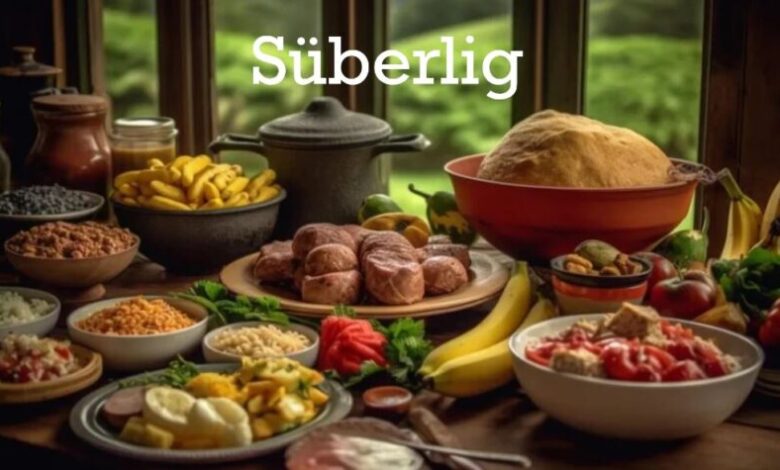Everything You Need to Know About Süberlig: A Complete Guide

Süberlig is a term that has gained attention in various cultural, historical, and social contexts. Whether it’s rooted in language, tradition, or a specific industry, understanding “süberlig” requires a careful examination of its origins, applications, and significance. This article aims to offer a detailed, well-rounded analysis of süberlig, providing valuable insights and information.
What is Süberlig?
Süberlig, at its core, is a term that resonates in various fields, often symbolizing a specific tradition, concept, or belief. While its usage may differ across cultures, its influence is notable in several domains. In many instances, süberlig refers to a cultural element that connects people to their history and identity. Its relevance may be found in literature, social gatherings, or ceremonial practices, depending on the context in which it is used.
The exact definition of süberlig is nuanced and can vary based on its geographical and cultural context. In some cultures, it is associated with specific rituals or festivals, while in others, it may refer to a philosophy or way of life that permeates daily activities. This diversity in interpretation makes süberlig a topic worth exploring in depth.
Also Read More: ArtOfZio
The Origins of Süberlig
To understand the full scope of süberlig, it is crucial to trace its origins. The term süberlig is believed to have originated in a region where cultural practices centered around community and collective identity. Its historical roots can be found in ancient rituals or gatherings, where the concept of süberlig played a central role in fostering unity and continuity.
Süberlig has often been described as a bridge between generations. It serves as a conduit for passing down knowledge, customs, and values from one era to the next. This concept is integral in many indigenous cultures, where oral traditions and collective memory are central to societal structure.
In some regions, süberlig was more than just a term; it was a way of life. People gathered to celebrate shared experiences, reinforcing a sense of belonging and continuity. These gatherings, often marked by music, dance, and storytelling, helped solidify the cultural relevance of süberlig in everyday life.
Cultural Significance of Süberlig
The cultural significance of süberlig cannot be overstated. In many societies, it serves as a foundational element of cultural identity. Its importance goes beyond mere tradition; it is a living, breathing concept that influences behavior, relationships, and even governance.
Süberlig represents a way for communities to maintain their heritage. It reinforces values such as respect, unity, and collective responsibility. This cultural aspect of süberlig is especially relevant in societies where ancestral customs are revered and upheld.
Moreover, süberlig often serves as a means of social cohesion. Whether it’s through communal feasts, festivals, or rituals, süberlig provides a platform for individuals to connect with one another on a deeper level. In this way, it helps foster a sense of community that transcends individual differences.
Süberlig in Modern Society
While süberlig may have originated in more traditional settings, its influence extends to modern society. In contemporary contexts, the term has evolved, adapting to new environments and challenges. Today, süberlig is not only a cultural symbol but also a concept that informs modern social dynamics.
In the modern world, süberlig can be found in a variety of forms. For example, it may be seen in the resurgence of interest in traditional festivals and ceremonies. It also plays a role in the growing movement to preserve indigenous languages and practices, as these elements are seen as vital to maintaining cultural identity in an increasingly globalized world.
Furthermore, süberlig has found its place in various subcultures, where it is often reimagined to align with current social trends. Whether it’s through fashion, art, or social media, the core principles of süberlig continue to resonate with younger generations.
Süberlig and Its Role in Language
Language plays a crucial role in the transmission of süberlig, as it is through language that traditions, beliefs, and customs are passed down. In many cultures, the word süberlig itself is imbued with meaning that extends beyond its literal definition. The way it is used in conversation, storytelling, or ritual reflects the values and worldview of the people who use it.
In some languages, süberlig is not just a term but an entire linguistic system that conveys specific messages and emotions. The nuances of how it is spoken can change depending on the situation, highlighting its adaptability and depth.
Moreover, the importance of süberlig in language is often tied to its role in maintaining cultural heritage. As language evolves, so too does the understanding of süberlig. In some cases, however, there is a risk that the term may be lost or diluted over time, particularly as younger generations may not fully appreciate its significance.
The Influence of Süberlig in Art and Literature
Süberlig has also had a profound impact on art and literature. In many cultures, artists and writers have used the concept of süberlig as a source of inspiration. Whether it’s through paintings, sculptures, poetry, or novels, the idea of süberlig provides a rich narrative framework that speaks to the human experience.
In literature, süberlig often symbolizes the eternal struggle to maintain identity in the face of external pressures. Writers explore themes of belonging, loss, and renewal, all of which are central to the concept of süberlig. These works serve as a reminder of the importance of tradition and the ways in which cultural continuity shapes personal and collective identity.
In the visual arts, süberlig can be seen in representations of communal life, ritual, and memory. Artists may depict scenes from festivals, rituals, or everyday life, capturing the essence of süberlig and its role in shaping the world.
Süberlig and Social Change
Over time, the concept of süberlig has been adapted and reinterpreted in response to social and political changes. As societies evolve, the role of süberlig has shifted to accommodate new realities. In some cases, this has led to the modernization of traditional practices, while in others, it has sparked a return to cultural roots.
The role of süberlig in social change is particularly relevant in the context of globalization. As cultures become more interconnected, the question arises: how can traditional concepts like süberlig remain relevant in a rapidly changing world? For some, this challenge is an opportunity to reinvigorate ancient customs, finding new ways to integrate them into contemporary life.
Moreover, süberlig plays a role in social justice movements, particularly those advocating for the preservation of cultural identity in the face of external pressures. Whether through political activism, education, or community organizing, süberlig has become a symbol of resilience and resistance.
The Future of Süberlig
Looking ahead, the future of süberlig appears both promising and uncertain. On the one hand, there is a growing movement to preserve and revitalize traditional cultural practices, with süberlig playing a central role. On the other hand, the forces of globalization and modernity continue to shape the world in ways that may challenge the relevance of süberlig in some contexts.
To ensure the continued relevance of süberlig, it is essential for communities to embrace it in a way that acknowledges both tradition and change. This may involve reinterpreting its meaning, adapting it to contemporary issues, or finding new ways to express its values.
At the same time, there is a need to preserve the essence of süberlig, ensuring that it remains a vital part of cultural heritage for future generations. This may require concerted efforts from cultural institutions, educators, and community leaders to keep the spirit of süberlig alive.
Conclusion
Süberlig is a concept that transcends time and space, connecting individuals to their heritage and to one another. Whether in the form of language, art, or social practice, süberlig continues to play a pivotal role in shaping cultural identity. By understanding its origins, significance, and evolution, we can better appreciate the value it brings to modern society.




